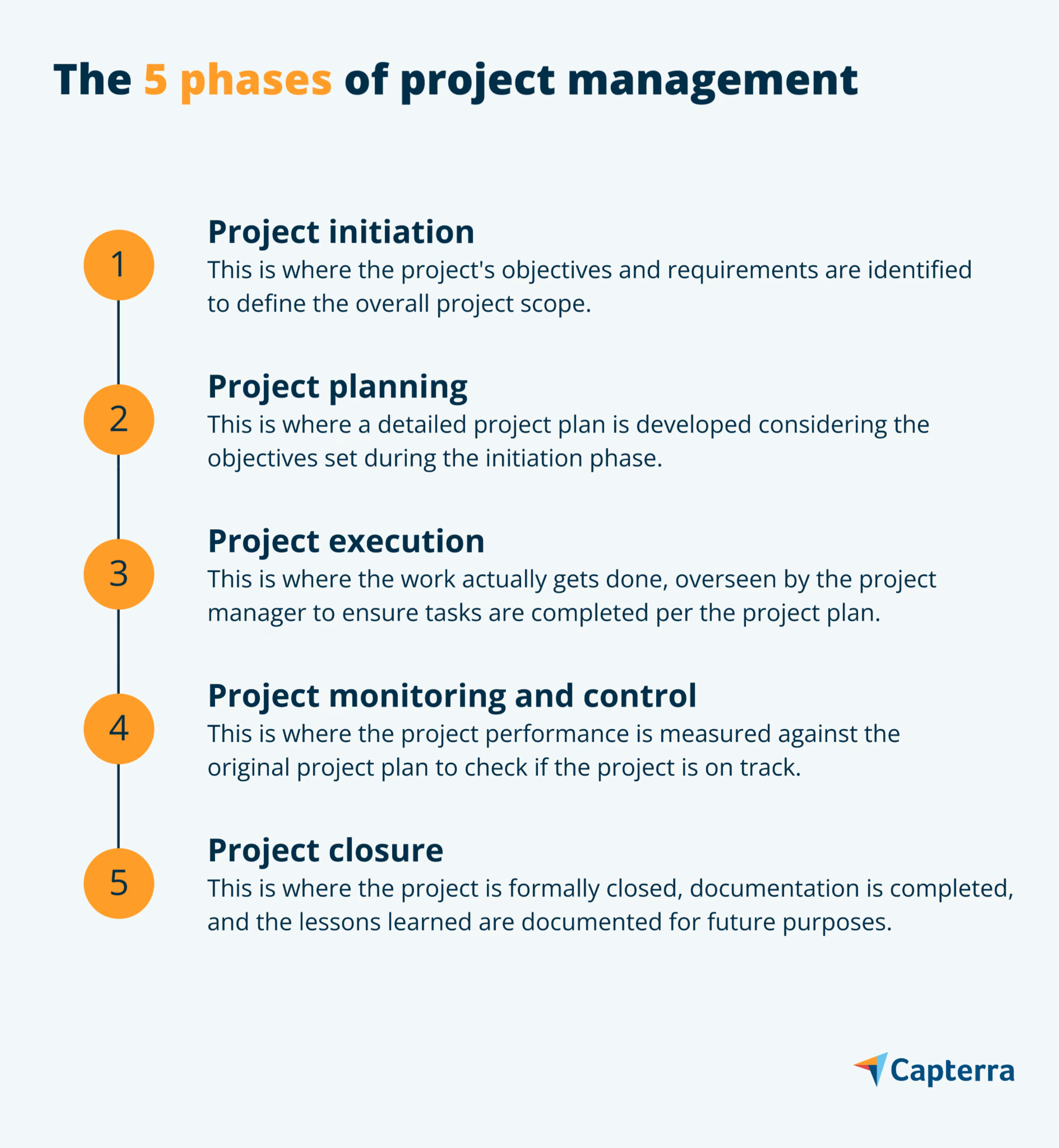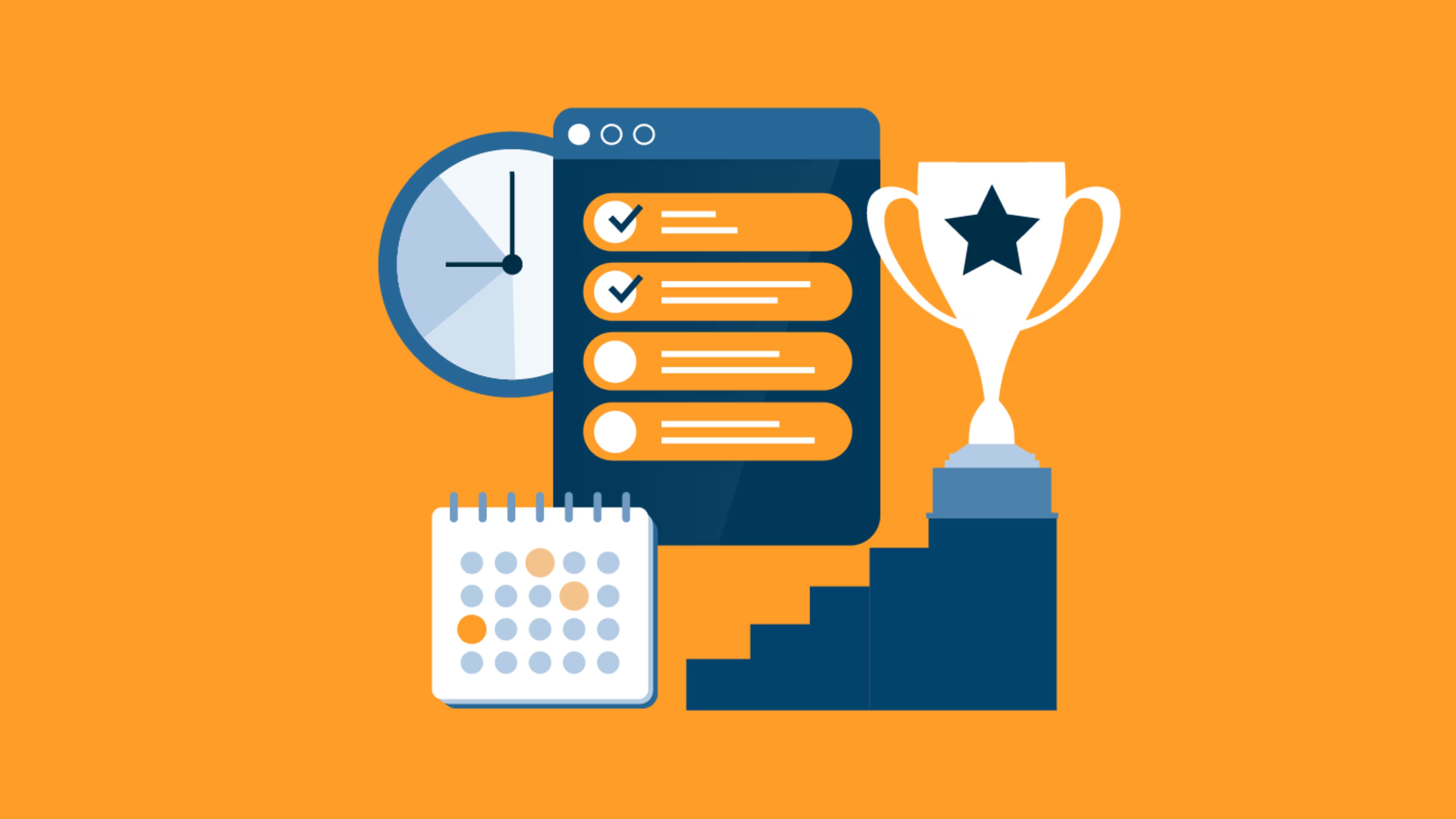Every project has five distinct phases: initiation, planning, execution, monitoring, and closure.
Ever wondered why some projects fail while others succeed? What separates a good project from a bad one? The answer is the efficiency with which a project is managed—which is influenced by the phases of project management.
A well-run project has five distinct phases: initiation, planning, execution, monitoring, and closure. These refer to the different stages a project goes through from start to finish. Managing a project in phases is a proven way to ensure timely completion within budget and scope.
Each phase has a specific purpose, and the five phases must be completed in order. Inaccurate management of project phases could result in missed deadlines, blown budgets, or project failure.
If you’re a project manager looking to effectively manage projects and avoid pitfalls, this blog is for you. We explain the different sets of opportunities each phase presents and the distinct objectives each has. But first, let’s understand the basics of project management phases and their importance.
Why should you focus on project phases?
The phases of a project allow you to track progress and identify potential issues early on by breaking the project down into smaller, more manageable parts. This helps avoid costly mistakes and delays that could steer your project away from its estimated budget and schedule.
In addition, project management phases help improve communication between team members by clarifying roles and responsibilities. Clearly defined tasks and objectives make it easier for your project team members to stay on track and work together efficiently.

Phase 1: Project initiation
The first project phase is all about getting started. During the initiation phase, you develop a clear understanding of the project’s purpose, scope, and goals. This is the time to put together a team and start making decisions about how the work will get done.
The project initiation stage includes deciding on a project management methodology, creating a budget, and taking the necessary approvals from stakeholders to move the project forward. Project initiation is the most important phase, as it sets the tone and direction for the entire project. You need to get a clear understanding of the project's purpose, scope, and goals during this stage. And for that to happen, you need a project charter.
A project charter is a statement of the project’s scope, objectives, deliverables, and participants. You must create one to find answers to questions such as: What is the project’s aim? Why should you do this project? Who all will be involved throughout the project lifecycle? A charter will provide a clear vision for the project and ensure it’s aligned with your business goals.
Best practices to make the most of the project initiation phase:
Be sure to involve every project stakeholder during this phase.
Use project management software to develop a clear, concise project charter that outlines the project purpose, goals, and objectives.
Create a project schedule that details all the project tasks that need to be completed and by when they need to be done.
Assemble a team of qualified individuals who have the skills and experience to complete the project work.
Develop a budget and obtain approval from all necessary parties.
Create a risk management plan to identify and mitigate potential project risks.
Schedule a project kickoff meeting at the end of the initiation phase to ensure everyone is on the same page from the start and avoid surprises later on.
Phase 2: Project planning
The second phase is all about planning your project. This is when you take all the information gathered during the initiation phase and use it to create a detailed plan of action to achieve the project’s objectives. The planning phase includes assigning tasks, developing communication plans, and setting up project deliverables or goals.
Make sure your goals are achievable by using the Specific, Measurable, Achievable, Relevant, and Timely (SMART) method. This approach will help you create tangible goals that are measurable, achievable, relevant to your company’s objectives, and have a time limit.
CLEAR, which stands for Collaborative, Limited, Emotional, Appreciable, and Refineable, is another results-driven goal setting method you can use. This approach ensures your goals are collaborative (shared by the team), limited in scope, emotional (motivating), appreciable, and can be refined as needed.
Best practices to make the most out of the project planning phase:
Create a detailed project plan that defines all the tasks, deadlines, and responsible parties.
Assign tasks to project team members and provide them the resources they need to complete their jobs.
Develop a clear, concise communication plan to keep everyone up to date on the project’s progress.
Monitor the project’s progress in real time and make adjustments to the project plan as needed.
Use project planning software to create a well-thought-out project plan. The software will make monitoring the project’s progress easier and help identify potential problems before they occur.
Phase 3: Project execution
This phase focuses on putting your project plan into action and getting the work done. This is when team members start working on their assigned tasks and begin progressing toward the project’s objectives. Your role during this phase is to delegate tasks wisely, provide support and guidance to your team, as well as track progress to ensure the project stays on track.
To ensure tasks are executed effectively, delegate them to the right people. Make sure you assign tasks based on each individual’s skills, experience, and availability. Also, provide clear instructions on what needs to be done and how it should be done. This will help avoid confusion and ensure tasks are completed the way you want.
Best practices to make the most out of the project execution phase:
Check in with team members regularly to provide support and answer questions they may have.
Keep an open communication channel with project stakeholders to keep them updated on the progress.
Be prepared to adjust the project plan, as needed, based on feedback and new information.
Track progress and milestones to ensure the project remains on track.
Use project tracking software to accurately track progress and milestones.
Stay flexible. Things that you didn’t plan for will inevitably come up, so it’s important to be able to adapt and make changes as needed.
Phase 4: Project monitoring and control
The fourth phase is about monitoring the project regularly to ensure it remains on track. This is when you closely monitor the project team’s progress and performance, and compare it to the original plan.
To ensure you stick to the original plan, identify your project’s critical success factors (CSFs)—i.e., factors critical for defining your project’s success—as well as key performance indicators (KPIs)—i.e., metrics used to assess the project performance.
CSFs are a set of conditions that must be met for a project to be successful, whereas KPIs are metrics that measure whether or not the CSFs are being met. For instance, a CSF for a website development project could be launching the site on time, while its KPI could be completing a set number of tasks per week.
Best practices to make the most out of the project monitoring phase:
Conduct regular team meetings to track progress and identify any issues that need to be addressed.
Have regular check-ins with stakeholders to keep them updated on progress and address any concerns they may have.
Analyze the project data regularly to ensure your project is on track.
Keep the project documentation up to date at all times so you can easily refer back to it when needed. This will also help you when it's time to write the project’s final report.
Document lessons learned throughout the project to improve processes for future projects.
Phase 5: Project closure
The fifth and final phase is nothing but wrapping up the project and tying up any loose ends. In this phase, you’ll create a final report documenting the entire project from start to finish. This report should include details on the project’s objectives, results, lessons learned, and any other relevant information.
Best practices to make the most out of the project closure phase:
Compare the project’s objectives against results to ensure they were met.
Identify any lessons learned during the project and document them for future reference.
Hold a team meeting to debrief the project and thank team members.
Be sure to celebrate the project’s successes and accomplishments with your team once the project is complete. This will help to boost morale and motivation for future projects.
Manage the project phases efficiently to ensure success
Managing projects effectively is essential for any business, big or small. These five project management phases will help ensure your projects are well organized, on track, and run smoothly from start to finish.
Just remember to be flexible and adaptable, as things that you didn’t plan for (such as changes in project requirements, budget, or any other unforeseen issue) could crop up at any time. And most importantly, don’t forget to celebrate the success once the project is complete.
When managing the different project phases, you may encounter several risks. Here are some project risk management resources to help tackle those risks:
